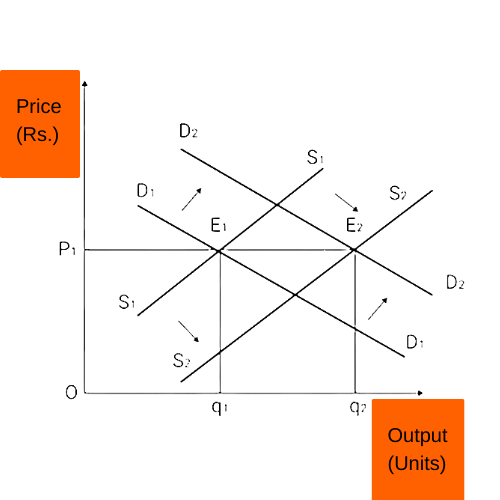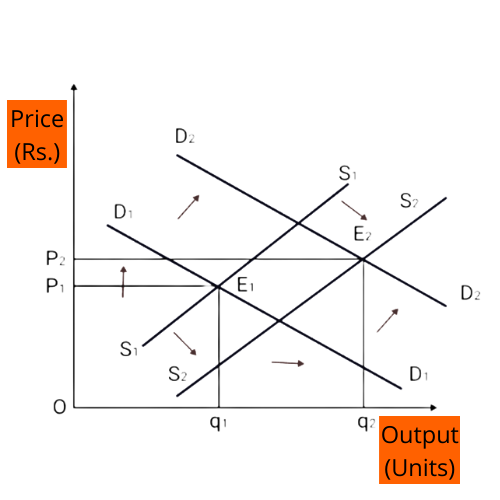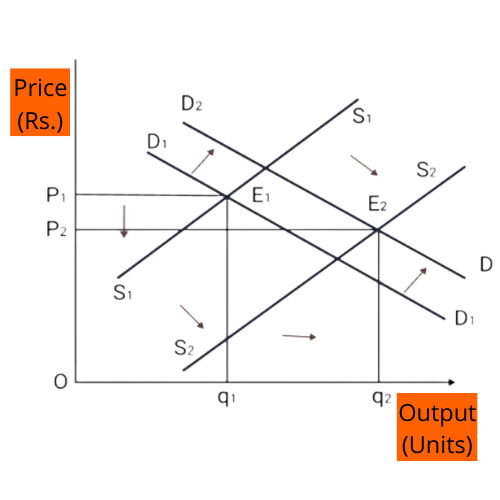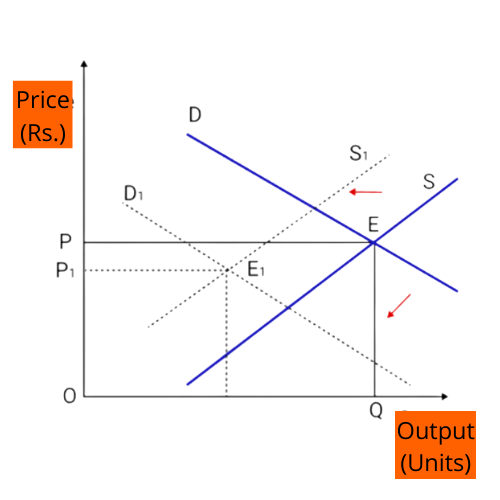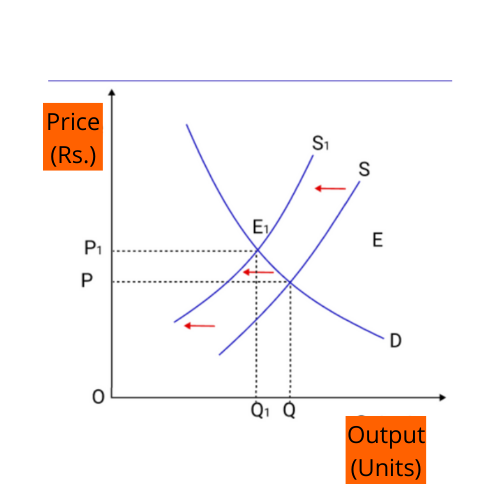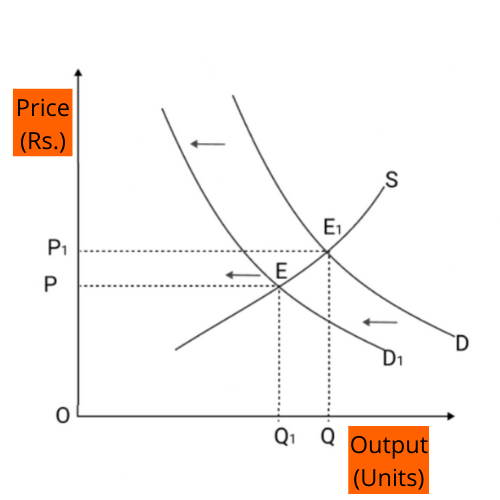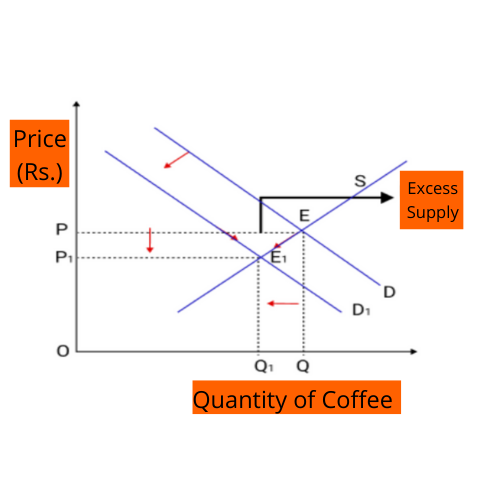Market Equilibrium Class 12 Extra Questions and Answers Free PDF Download
FAQs on CBSE Important Questions for Class 12 Economics Market Equilibrium - 2025-26
1. What is market equilibrium, and how is it determined as per the Class 12 Economics syllabus?
Market equilibrium is the state where the quantity demanded equals the quantity supplied at a particular price. It is determined by the intersection of the demand and supply curves, ensuring there is no tendency for further change in price or quantity in that market, according to the CBSE 2025–26 Economics syllabus.
2. Explain three key factors that can disturb market equilibrium in Class 12 Economics context.
The major factors that can disturb market equilibrium include:
- Change in demand due to shifts in consumer income or preferences
- Change in supply caused by input cost fluctuations or technological advancements
- Government interventions such as taxes, subsidies, or price controls
3. In CBSE Class 12 exams, how is equilibrium price affected if both demand and supply increase simultaneously?
If demand and supply both increase at the same time, the equilibrium quantity definitely rises, but the effect on equilibrium price depends on the relative magnitude of the shifts:
- If demand increases more than supply, price rises.
- If supply increases more than demand, price falls.
- If both increase equally, price remains unchanged.
4. Why is a perfectly competitive firm called a ‘price taker’ in Class 12 market equilibrium questions?
In a perfectly competitive market, individual firms are called ‘price takers’ because they sell products that are identical to those sold by other firms and cannot influence the market price. The price is set by overall market forces of demand and supply, as per CBSE Class 12 guidelines.
5. Describe one ‘5-mark’ HOTS question on how market equilibrium is restored after a sudden fall in supply, referencing recent board trends.
When supply unexpectedly drops, there is initially excess demand at the original price. This leads to competition among buyers, pushing up the price. As price rises, quantity demanded falls and quantity supplied rises (producers are incentivized). The process continues until a new equilibrium is achieved at a higher price and lower quantity. CBSE often asks this as a ‘chain of effects’ in board exams.
6. State two commonly tested differences between market equilibrium under perfect competition vs monopoly for Class 12 important questions.
- Perfect Competition: Price equals marginal cost at equilibrium; firms are price takers. Equilibrium is determined by market demand and supply.
- Monopoly: Price is set above marginal cost; monopolist as a price maker. Equilibrium is determined where marginal revenue equals marginal cost for the single producer.
7. What is the significance of abnormal profits in the context of market equilibrium for Class 12 board exams?
Abnormal profits refer to profits exceeding normal earning levels (over and above opportunity cost). In the long-run equilibrium of a perfectly competitive market, abnormal profits attract new firms, which increases supply and reduces price, restoring only normal profits. Board questions often use this to test knowledge of equilibrium adjustment.
8. How do indirect taxes affect market equilibrium as per Class 12 CBSE expectations?
The imposition of an indirect tax (such as GST) increases the cost for producers, resulting in a leftward shift of the supply curve. This leads to a higher equilibrium price and lower equilibrium quantity. Understanding diagrammatic representation is essential for scoring in application-based questions.
9. Outline the stepwise method to solve a numerical on market equilibrium as typically required in CBSE Class 12 exams.
- Write down the given demand and supply equations (e.g., Qd = 100 - 10P, Qs = 20 + 15P).
- Set Qd = Qs and solve for P (the equilibrium price).
- Substitute P back into either equation to find the equilibrium quantity.
- Double-check units and ensure steps align with the CBSE answer key format.
10. What are the implications if equilibrium in a market is not achieved, with reference to Class 12 important questions?
If equilibrium is not achieved, there is either excess demand or excess supply. Excess demand leads to rising prices; excess supply results in falling prices. Persistent disequilibrium can create black markets or unsold inventories. Understanding these effects satisfies both 3-mark and 5-mark question types as per the 2025–26 syllabus.
11. FUQ: How can misconceptions about the law of equilibrium cause errors in exam answers, and how should students avoid them?
Common misconceptions include assuming only price changes restore equilibrium or confusing movement along curves with shifts of curves. Students should:
- Clearly distinguish between shifts vs movements.
- Justify adjustment mechanisms using both price and quantity changes.
- Carefully read what is being changed: variables vs constants.
12. FUQ: Compare the adjustment speeds of equilibrium in perishable vs durable goods markets, following HOTS format.
Perishable goods (like vegetables) tend to find equilibrium faster due to the inability to store excess supply; prices fall quickly if unsold. Durable goods (like cars) can be stored, so sellers may wait for better prices, resulting in slower adjustment. This application-focused comparison is frequently used in CBSE HOTS questions.
13. FUQ: What ‘blind spots’ in board answers should students avoid when diagramming market equilibrium scenarios?
Students often miss correct labelling of curves, axes, and equilibrium points, or forget to indicate direction of shifts. For full marks, always:
- Label Demand (D) and Supply (S) curves clearly
- Mark initial and new equilibrium points
- Show direction of curve shifts
14. FUQ: Suggest a structured approach to answer ‘explain with diagram’ 5-mark questions on simultaneous changes in demand and supply in recent CBSE papers.
Begin by outlining the case (increase/decrease in both demand and supply). Draw the original and new curves on the same graph, marking equilibrium shifts. State clearly whether the price, quantity, or both changes, and support each conclusion with reference to the diagram. End with a concise summary, aligning to 5-mark CBSE board expectations.
15. Why is studying market equilibrium important in Class 12 CBSE Economics?
Understanding market equilibrium is fundamental because it explains how prices and output are determined in free markets, predicts the effects of policy or external shocks, and forms the basis for more advanced economic analysis, as outlined in the 2025–26 CBSE syllabus.


























